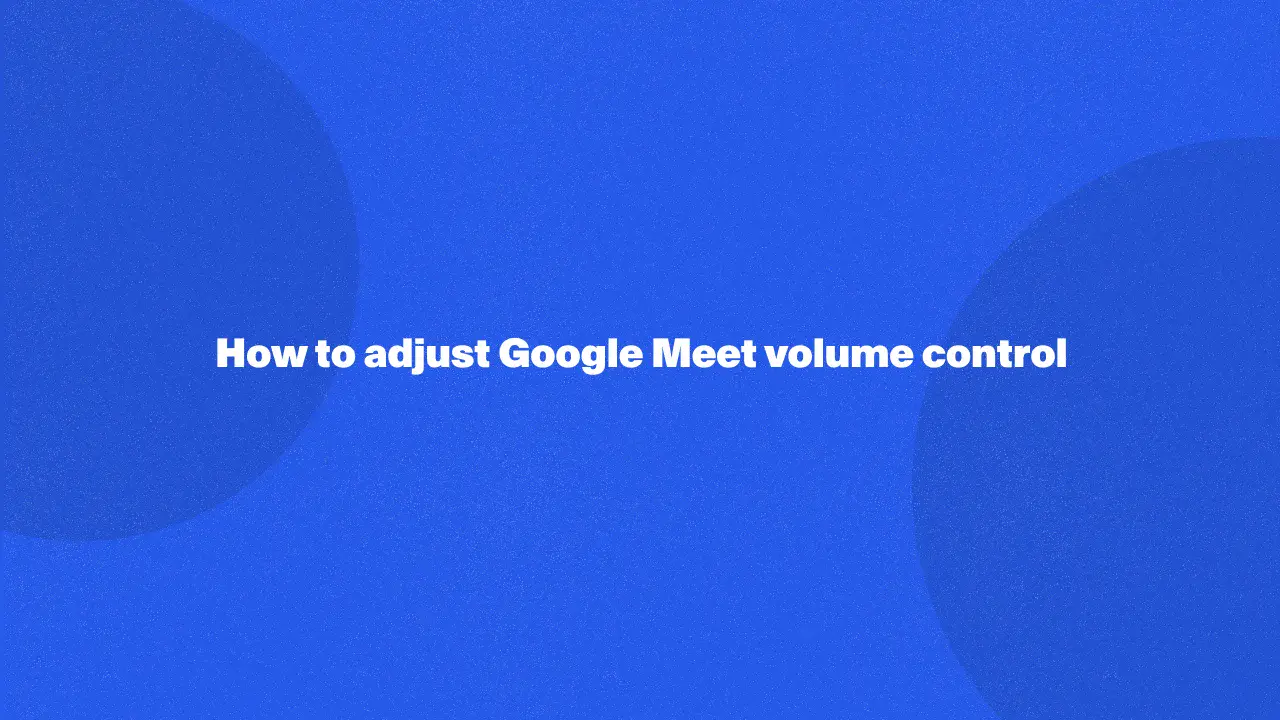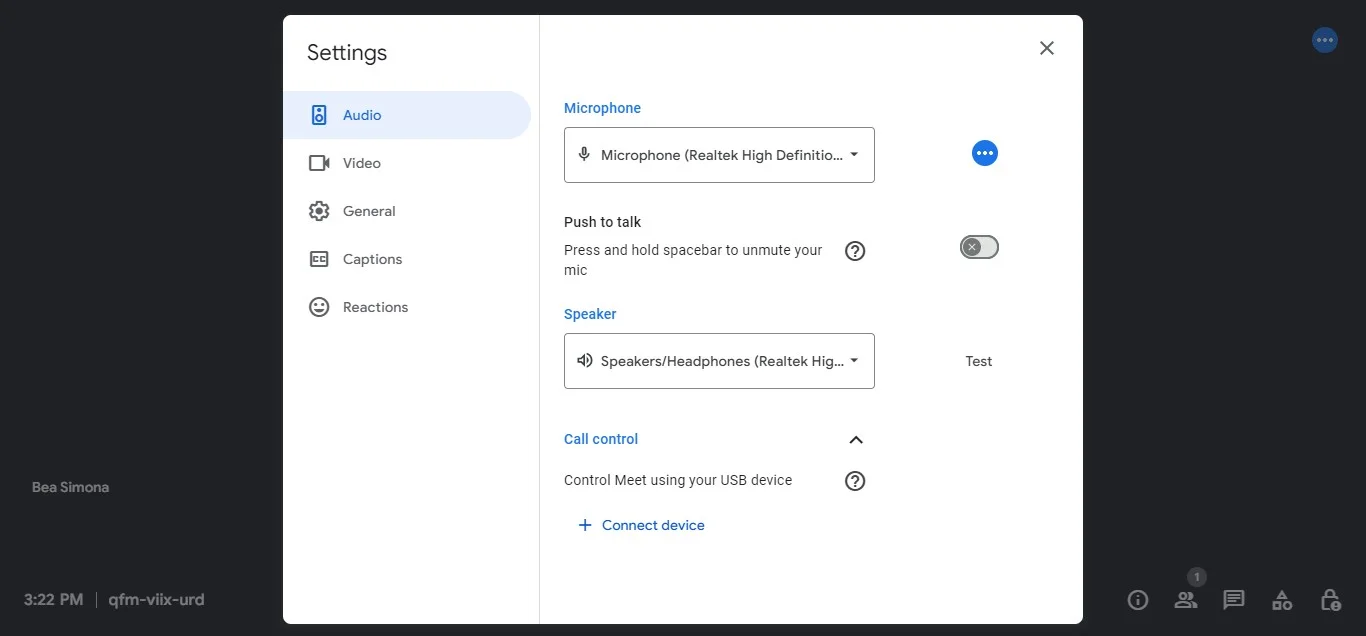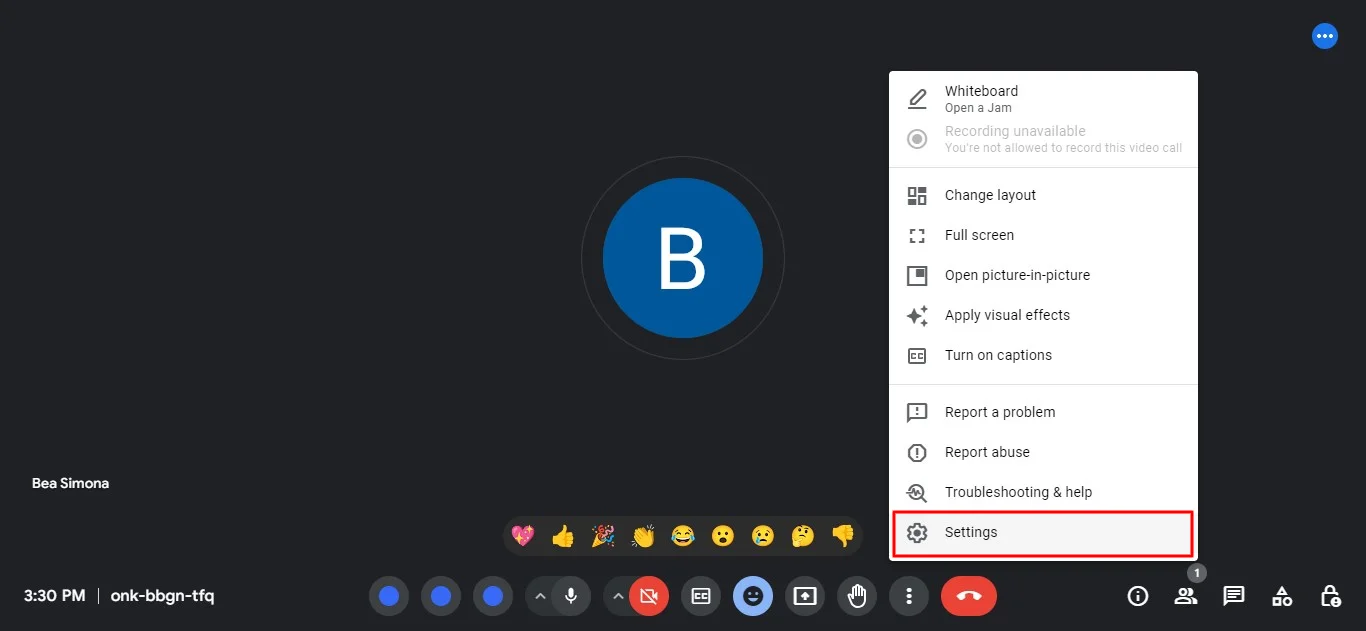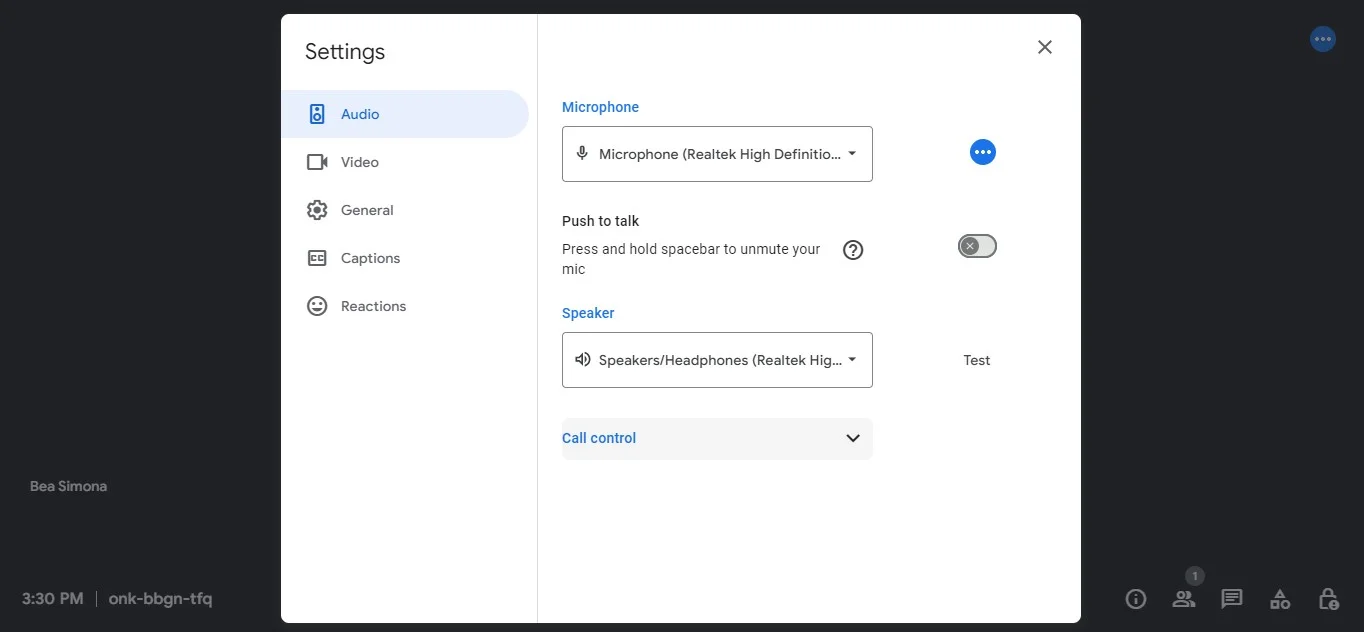
Adjusting the volume in a Google Meet video meeting is essential for ensuring clear communication during virtual meetings. This guide explains how to use volume controls on various devices, offering practical solutions for common audio issues such as low sound or disruptive background noise.
While Google Meet calls doesn't have a built-in volume control, this guide will unveil some clever workarounds. Learn how to leverage your device's volume settings and explore alternative solutions to manage the audio in your meetings. Whether you're on a Mac, Windows PC, or mobile device, discover valuable tips to optimize your Google Meet audio experience.
Volume Control Main Features
There are two main ways to think about volume: physical controls on a device and software volume when you join meetings.
Physical volume controls
These are the buttons or knobs you'll find on most electronic devices. Their location is typically on the side of the device, but can vary depending on the device. They are easily operated by pressing the up or down button to increase or decrease the volume. Meet calls don't require any Google Meet hardware to function.
Software volume levels
Most operating systems also have a software volume. Within the software volume control, you can often adjust different audio settings, such as:
- Media volume: This controls the volume of music, videos, games, and other media.
- Ring volume: This controls the volume of your ringtone when you receive a call or notification.
- Notification volume: This controls the volume of notification sounds.
- Alarm volume: This controls the volume of your alarm clock.
- Call volume: This controls the volume of the other person during a call (on phones).
- System volume: This controls the volume of all other sounds on your device, such as button clicks and keyboard sounds.
On some devices, you may also be able to use a touchscreen slider to adjust the volume.
When does Google Meet automatically adjust the volume?
Google Meet has a feature that automatically adjusts the volume to ensure a consistent and clear audio experience during video conferences. This automatic volume adjustment is part of its noise cancellation and audio enhancement capabilities. Here’s when and how Google Meet automatically adjusts the volume:
- Background noise detection:
- When Google Meet detects background noise (e.g., typing, traffic, or other ambient sounds), it automatically adjusts the volume and applies noise cancellation to minimize distractions.
- Speaker detection and switching:
- When multiple participants are speaking, Google Meet automatically adjusts the volume levels to ensure that the active speaker is heard clearly. This includes lowering the volume of background conversations.
- Echo cancellation:
- If Google Meet detects echo or feedback from participants’ microphones, it will adjust the audio settings to reduce or eliminate these issues, ensuring clearer communication.
- Volume leveling:
- Google Meet balances the audio levels when there are significant disparities in volume between different speakers. This helps maintain a consistent listening experience for all participants.
How To Adjust The Volume In Google Meet
How to adjust the volume on Google Meet as a participant
As mentioned, you can adjust the overall volume using your device's volume controls. However, there's no built-in way to directly control individual participant volume within Google Meet in the Chrome browser or Google meet app.
How to equalize participants' volume on Google Meet
Google Meet doesn't currently offer a feature to directly equalize participant volume. Here are some alternative approaches:
- Adjust microphone levels: If a specific participant's volume is too loud or soft, you can politely request them to adjust their microphone level through their device's settings.
- Noise cancellation: Enabling noise cancellation in Google Meet settings (three dots > Settings > Audio) can sometimes help reduce background noise and make quieter participants more audible.
Adjust Volume In Google Meet On Different Devices
Adjusting the volume in Google Meet can be done easily using the built-in controls on your device. Here’s how to adjust the volume on each type of device:
On Mac
- System volume control:
- Click on the volume icon in the menu bar at the top-right corner of the screen.
- Use the slider to adjust the overall system volume.
- Keyboard shortcuts:
- Use the F11 and F12 keys (or the volume keys on the Touch Bar for newer models) to decrease or increase the volume.
On Windows
- System volume control:
- Click on the speaker icon in the system tray at the bottom-right corner of the screen.
- Use the slider to adjust the overall system volume.
- Click the mic to mute any sound level.
- Keyboard shortcuts:
- Use the volume keys on your keyboard (usually marked with speaker icons) to increase or decrease the volume.
On iOS
- Physical volume buttons:
- Adjust the volume during a Google Meet call by using the volume up and down buttons on the side of your iPhone or iPad.
- Control center:
- Swipe down from the top-right corner on iPhone X and later models, or swipe up from the bottom on iPhone 8 and earlier models, to access the Control Center.
- Use the volume slider to adjust the speaker volume.
On Android
- Volume buttons:
- Use the volume up and down buttons on the side of your Android phone or tablet to adjust the volume during Google Meet calls.
- Sound settings:
- Swipe down from the top of the screen to access the Quick Settings panel.
- Use the volume slider to adjust the system volume.
Resolving Common Audio Problems
Here's how to tackle some common audio issues you might encounter in Google Meet:
Echo
- Check microphone placement: Make sure your microphone isn't too close to the speakers. This creates a feedback loop causing an echo.
- Reduce background noise: Close windows and doors, and turn off noisy appliances like fans or radios.
- Mute yourself: This prevents your microphone from picking up other participants' audio and creating an echo effect.

- Disable other microphones: If you're using a headset with a microphone, disable the built-in microphone on your computer to avoid conflicts. You can usually do this through your device's sound settings.
- Step 1:

- Step 2:

Mute issues
- Microphone check: Before a meeting, use the microphone test feature in Google Meet settings:
- >three dots

- > Settings

- > Audio

- to ensure your microphone is working properly.
- Check mute button: Click the microphone icon in the bottom left corner of the Google Meet window. A red slash through the icon indicates you're muted. Click it again to unmute yourself.
- Device permissions: Make sure Google Meet has permission to access your microphone. You can usually check this in your device's privacy settings.
- Headset/microphone connection: When using a headset, ensure it's properly plugged into your device. If using a wireless headset, check its battery level and connection.
Conclusion
The knowledge you've gained empowers you to tackle common audio issues and optimize your Google Meet experience when you decide to enter your Google Meet code. But what if you need to capture more than just clear audio for meeting participants? For those looking for a comprehensive recording and documentation solution, look no further than Bluedot.
Bluedot provides crystal-clear audio recordings, along with automatic transcriptions and intelligent note-taking features. This empowers you to revisit key points effortlessly, share recordings with colleagues, and ensure nothing gets lost in the shuffle.
Bluedot doesn't stop at recording and transcription. It offers a suite of features to streamline your workflow, including:

%201.svg)
